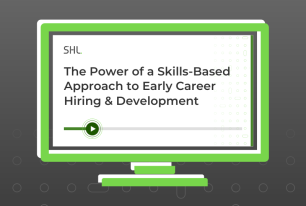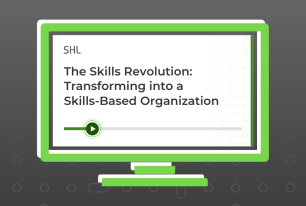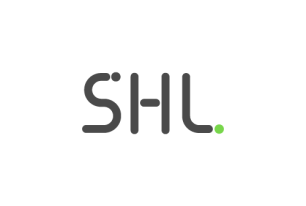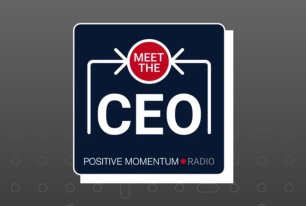Build “Fidelity” during the Hiring Process through Job Simulations
How to create scenarios to give high potential candidates a realistic preview of the job position and organization.
Share
A common goal in pre-hire assessment processes is creating transparency for candidates. Specifically, the aim is to provide candidates with visibility into the work activities and expectations for the role. This is often done through various methods like interviews, job descriptions, and company marketing materials or videos that provide insight into the culture and work environment.
However, these methods are more descriptive in nature and often fail to truly offer candidates an experience or behavioral understanding of what the job is like. Not only do organizations want to gain visibility into the potential of a candidate, but it’s also vital for the candidate to gain insight into the job requirements and work environment so they can ‘opt-in’ to continue in the hiring process based on a more holistic understanding of the role.
At SHL, we often help organizations build job simulations for candidates to efficiently experience what the job requires. These simulations or experiences provide a form of validity called ‘fidelity’.
Fidelity, in the pre-employment realm, is the extent to which an assessment or exercise exemplifies or simulates key behavioral requirements of a given role. The visual below helps illustrate the extent to which some of the different pre-employment assessments (might) fall on a ‘fidelity continuum’.

It’s best to have multiple approaches to assess candidates and each method typically provides value in different ways. However, when focused on ‘fidelity’ simulation exercises can’t be beat.
Here are 3 steps to creating job simulations:
#1—Job Analysis
A thorough job analysis provides the foundation for understanding the role requirements and the key activities and behaviors vital to being successful. This information is collected by reviewing relevant job materials (i.e., job descriptions, competency models, etc.), facilitated focus groups, shadowing the job of interest, and even collecting data through a job analysis survey. Data collected from the Job Analysis serves as the anchor for creating simulation exercises.
#2—Simulation Framework Development
Once the key job characteristics, competencies, and work environment characteristics are documented, the format of the simulation can be determined. The simulation scenario can be identified and developed to create a realistic situation in which the candidates can be evaluated in relation to the identified competencies. Complexity and technological requirements can vary from an intricate online-based virtual scenario to a simple scenario presented to a candidate. Linkage analysis can also be performed to utilize one of SHL’s library of validated scenarios.
At SHL, we often help organizations build job simulations for candidates to efficiently experience what the job requires.
#3—Deployment
Once the scenario has been created and the logistics are determined, then evaluation materials are developed to assess the candidate’s performance during the scenario. This should include training assessors to ensure they reliably rate candidates across the competencies and characteristics identified in the Job Analysis.
Of course, there are additional intricacies and steps to effectively build a validated scenario with high fidelity; however, these scenarios not only provides an effective way to gauge a candidate’s potential in the role, it also provides candidates a glimpse into what a ‘day in the life’ may look like and offers an experience for them to gauge their interest in the position.
At SHL, we’ve developed scenarios focused on managerial or executive potential, entry-level sales associates, and our highly effective Call Center Virtual Scenario. Some of these scenarios can be utilized in a ‘group hiring’ process to evaluate multiple candidates at one time.
If you're interested in learning more about developing a pre-employment scenario assessment for your organization, please contact us.









